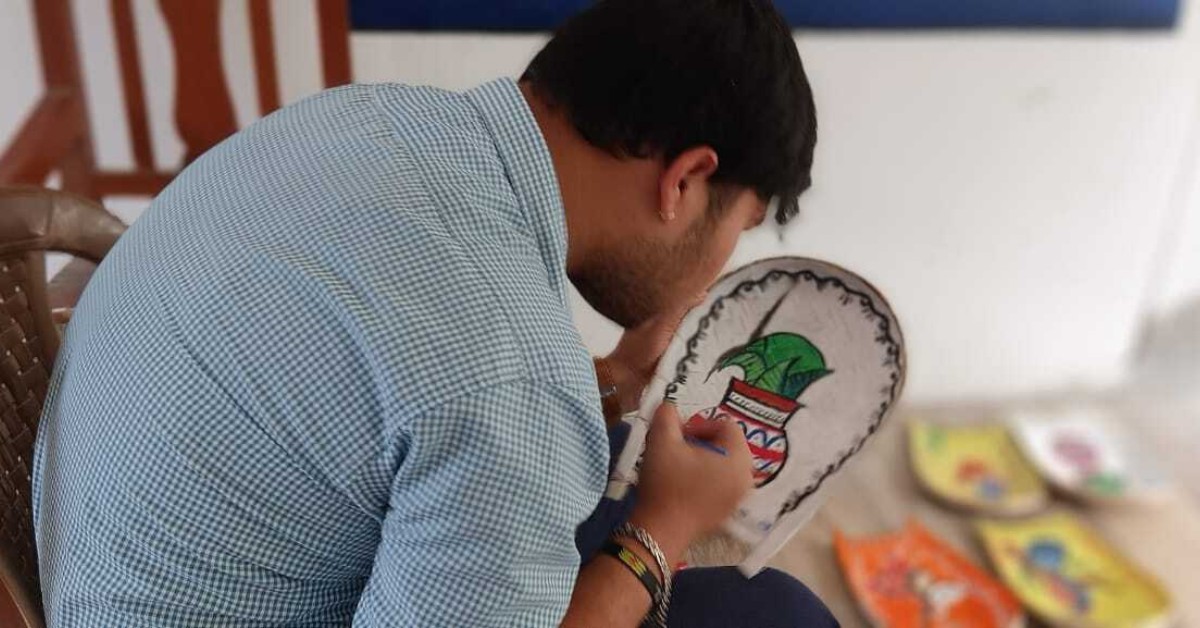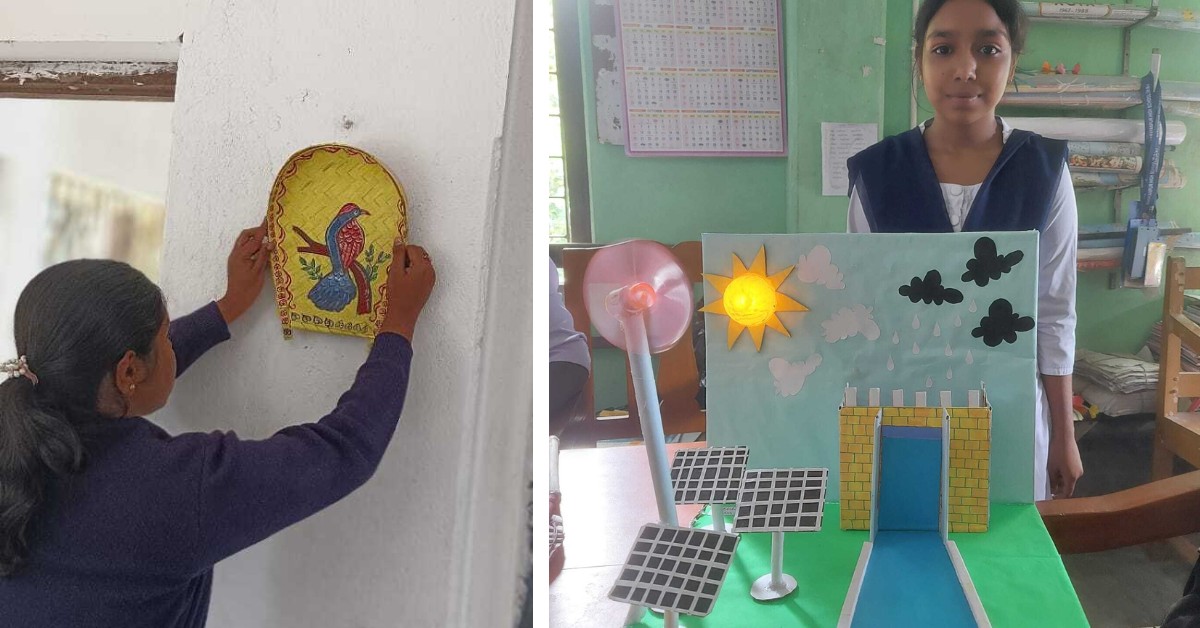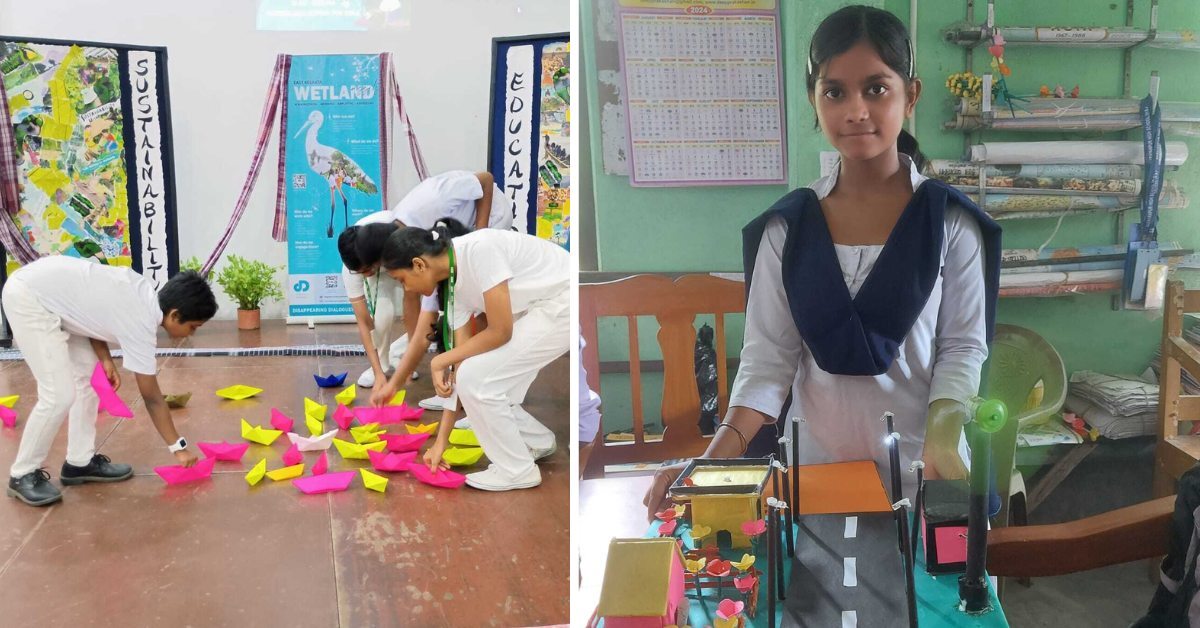How a Rural School Near Kolkata Is Teaching Kids Sustainability — Using Nothing but Trash
At Narayanpur High School in West Bengal’s Bhangar region, surrounded by the fragile beauty of the East Kolkata wetlands, education has taken a new turn. Once tethered to rote learning and exam preparation, the school has been reshaped into a living example of sustainable practice. Under the leadership of Avijit Dasgupta, the students have gone beyond classrooms and textbooks to engage with pressing environmental issues, especially waste. Today, they are turning everyday rubbish into useful and artistic creations, proving that learning can be both purposeful and hands-on.
At Narayanpur, waste is not treated as a nuisance; it is a resource. From pottery made using discarded materials to marketable products crafted from what would otherwise be rubbish, students are learning how creativity can turn trash into treasure. These projects help them understand sustainability not just as a concept, but as a skill.
 Students at Narayanpur High School do not treat waste as a nuisance
Students at Narayanpur High School do not treat waste as a nuisance
What others can learn: Integrate creative reuse into the curriculum, let students work with everyday waste to make useful items and artwork. It builds environmental awareness, design thinking, and self-confidence.
2. Use practical workshops to build real-world skills
The school partners with organisations like Disappearing Dialogues to run experiential workshops on water conservation, biodiversity, and waste management. As Avijit explains to The Better India, “We hold waste management workshops to equip students with practical skills.” Pupils observe, measure, and redesign everyday habits, from water use to recycling systems.
What others can learn: Move beyond lectures. Local partnerships can help schools introduce practical sustainability education tailored to community challenges.
3. Start with small goals
Narayanpur set out to become a plastic-free campus. While not yet 100 percent there, the school has already reduced plastic usage by about 70 percent. “When I joined as a headmaster, students were careless with plastic. But now, they know better,” says Avijit. Students even encourage their families to change habits, as Class 11 student Anjali Das shares with The Better India, “I’ve also started teaching my family and friends to do the same.”
 The school conducts waste management workshops for the students so they learn how to create something useful from it
The school conducts waste management workshops for the students so they learn how to create something useful from it
What others can learn: Set clear and achievable goals like banning single-use plastic or installing recycling bins. Let students lead the change and involve their homes too.
4. Let students lead and learn from nature
From naming and cataloguing trees to learning about the Sundarbans and the endangered Bengal tiger, students are connecting with the natural world around them. “I’ve seen these plants and animals in real life, and now I want to show future generations how important they are,” Riya Ghosh tells The Better India, another Class 11 student.
What others can learn: Encourage direct interaction with nature; even simple biodiversity mapping or school gardening projects can give students a lasting connection with their environment.
5. Be prepared for resistance and let results speak
Not everyone welcomed these changes at first. “Initially, the guardians were not very supportive when they saw their children participating in cleaning activities,” Avijit admits. But once students began gaining confidence, skills, and national recognition, support followed. “Textbook learning is one-dimensional,” he says, pointing to the broader life preparation this model offers.
 This school sets an example by teaching children responsible waste management from an early age
This school sets an example by teaching children responsible waste management from an early age
What others can learn: Communicate openly with parents. Show them how practical projects strengthen, and not replace, academic growth.
Narayanpur High School’s growth is a reminder that meaningful education need not be confined to the classroom. By connecting students to real-world issues through creative and practical engagement, the school has built a generation that understands the importance of environmental responsibility and is actively contributing to it.
News